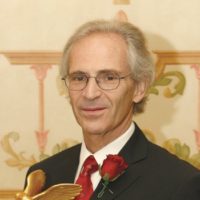
Marc Feldmann
Imperial College London, Kennedy Institute of Rheumatology
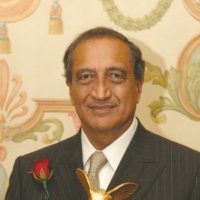
Ravinder N. Maini
Imperial College London, Kennedy Institute of Rheumatology
For the discovery of anti-TNF therapy as an effective treatment for rheumatoid arthritis and other autoimmune diseases.
The 2003 Albert Lasker Award for Clinical Medical Research honors two scientists who discovered anti-TNF therapy as an effective treatment for rheumatoid arthritis and other autoimmune diseases. Despite initial skepticism from the research community about their idea, Marc Feldmann and Sir Ravinder Maini transformed their findings in the laboratory into a powerful treatment. The therapy they developed has brought relief and vitality to hundreds of thousands of people worldwide, and promises to better the lives of even more individuals as it proves effective against additional debilitating illnesses.
All autoimmune diseases — conditions in which the body turns against itself — arise from multiple causes and involve a large number of misbehaving molecules. In particular, proteins called cytokines, which carry signals between cells to orchestrate the fight against invading microorganisms, act up and provoke ferocious inflammation. When Feldmann and Maini began their work in 1984, most scientists doubted that neutralizing a single molecule would quiet such complicated multifactorial systems. Yet the researchers discovered that crippling one of the cytokines — TNF — pacified the entire inflammatory entourage.
Award presentation by Craig Thompson
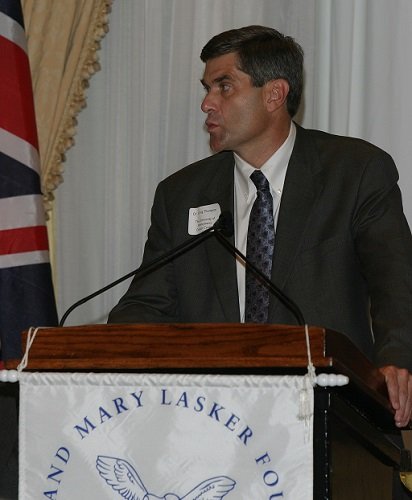 To understand the achievements of this year’s Lasker Clinical Medical Research awardees, it is important to consider the vital role the immune system plays in protecting us from infection. The immune system must constantly distinguish our own cells from those of the viruses and bacteria to which we are exposed. Its critical role has been demonstrated by the devastating infections experienced by children born without an intact immune system, by patients whose immune function has been destroyed by diseases such as AIDS, or when a cancer patient’s immune cells are damaged as a result of the side effects of chemotherapy. Thus, the complex immune system we have evolved plays a vital role in maintaining our health and survival. Harnessing its power to prevent disease through vaccination is one of the most important medical advances of the last century.
To understand the achievements of this year’s Lasker Clinical Medical Research awardees, it is important to consider the vital role the immune system plays in protecting us from infection. The immune system must constantly distinguish our own cells from those of the viruses and bacteria to which we are exposed. Its critical role has been demonstrated by the devastating infections experienced by children born without an intact immune system, by patients whose immune function has been destroyed by diseases such as AIDS, or when a cancer patient’s immune cells are damaged as a result of the side effects of chemotherapy. Thus, the complex immune system we have evolved plays a vital role in maintaining our health and survival. Harnessing its power to prevent disease through vaccination is one of the most important medical advances of the last century.
Acceptance remarks
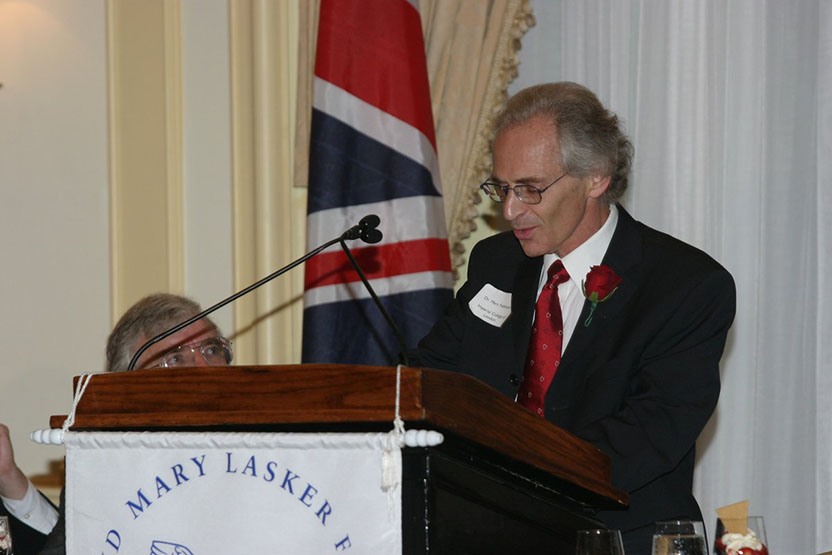
Acceptance remarks, 2003 Lasker Awards Ceremony
Ms. Hunt, Mr. Fordyce, Dr. Goldstein, ladies and gentlemen:
It is a great honor to accept the Lasker Award, and a particular pleasure to share it with my colleague and friend of 20 years, Tiny Maini, with whom I have had a most enjoyable collaboration.
As a medical student in Melbourne, I realized we knew very little about disease mechanisms, and was eager to learn more. Gus Nossal offered me the opportunity to do a PhD at the Walter and Eliza Hall Institute in the early days of immune cell culture, with Erwin Diener. My father queried why I no longer wanted to help patients, and I replied glibly that if research worked, instead of helping patients one by one, you could help thousands. Little did I know that this dream would one day come true.
Research was a wonderful experience, in a small Institute peopled by scientific giants Gus Nossal, Jacques Miller, and Don Metcalf (a Lasker Awardee). All members, no matter how junior, were highly valued, and encouraged. Due to the persisting influence of another Lasker Awardee, MacFarlane Burnet, I acquired an interest in the paradox of autoimmunity, and in soluble mediators of immunity and inflammation. At the time these were not characterized, but progress led to their definition as pro-inflammatory proteins, cytokines.
In the early 1980s, I was working in London at the Tumour Immunology Unit, led by Avrion Mitchison. While anti-tumor immunity was evident in animals, it was not in humans, so I decided to explore autoimmune diseases, where there are unwanted immune responses to self, to learn how to induce desirable immune responses to human cancers. But as I developed testable ideas on how autoimmune disease might be generated, I left cancer research to concentrate on autoimmunity. The most accessible human autoimmune disease was rheumatoid arthritis, and the collaboration with Tiny began, which has brought us here today.
Receiving an award as prestigious as this prompts reflection, and gratitude to very many key people. First, to my many scientific collaborators, mentors and friends, and I am glad that some of them are here today. My family has given me enormous pleasure and support. My wife, Tania, has organized a thing called a cultural life and wonderful holidays for us, hiking all over the world. These absences have been invaluable for seeing my research in a much clearer light, and nearly all my new ideas have come while away from the lab. Having fun with my children helped, too.
I have found it an exhilarating adventure, working in science, yet with the opportunity to benefit patients. There is little to match the job satisfaction of seeing a patient treated with your new invention run down the stairs, a week after being barely able to manage them. But that is, if you are lucky, a once in a lifetime event, and persistence in the face of difficulties is more the norm.
My parents gave my brother and me a fine example of how to cope through tough times. After managing by great good fortune to survive the war in Poland, we moved to France, and then emigrated to Australia when I was eight, and arrived knowing no English. There they made a new start, and my father had to become an accountant all over again, in the late 1940s, as his French pre-war degree was not recognized. My parents valued education highly, and were proud that both their sons became doctors. I owe so much to them. They would have been so happy to be here today.
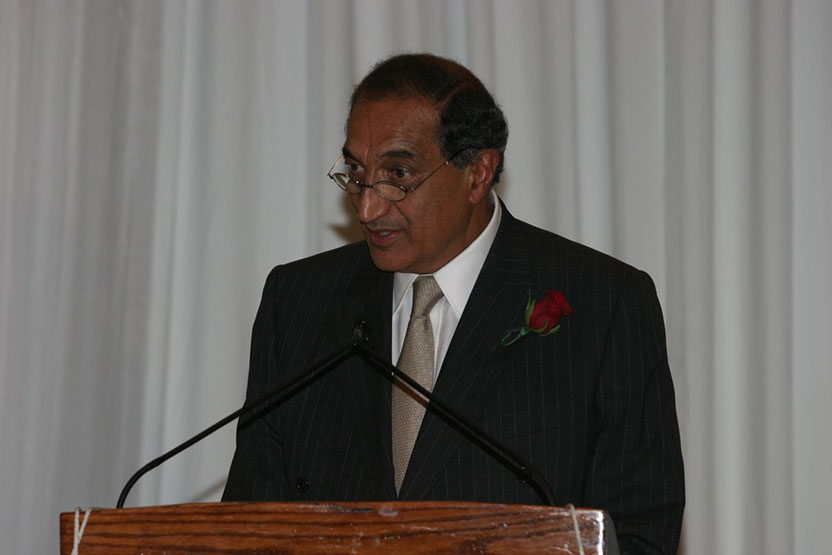
Acceptance remarks, 2003 Lasker Awards Ceremony
Dr. Goldstein, Madam President, Chairman, Ladies and Gentlemen.
I feel greatly privileged to be a co-recipient of the Clinical Medical Lasker Award, and especially happy that I am to share this honor with Marc, my friend and close colleague for the past 20 years.
As an undergraduate at Cambridge University, and later at Guy’s Hospital in London, I was truly inspired by my teachers and mentors, especially Dr. Charles Baker, a cardiologist, and Professor John Butterfield, the Head of Medicine. Here I was introduced to the scientific basis of medicine, learned the art of practicing bedside medicine, and developed a critical and questioning approach to medical dogma. More importantly, I began to appreciate the importance of clinical measurement. This experience was responsible for a brief foray into measuring pressures and performing angiography by cardiac catheterisation in acquired and congenital diseases of the heart.
I rapidly tired of this mechanical approach and instead became fascinated and excited by the immunological concepts underpinning the emerging field of modern rheumatology. In the late 1960s and early 1970s as a Fellow at The Kennedy Institute of Rheumatology in London, I began to examine the biological activity of soluble factors termed lymphokines or cytokines, elaborated by the interaction of lymphocytes with antigens. I was greatly encouraged at this formative stage to have a paper accepted for publication in Nature, and by an invitation from Barry Bloom to present my work at the First International Congress of Immunology in 1971 in Washington, DC. Next, with Dumonde and based on the ideas and work of Jerry Lawrence at NYU, I embarked on a small placebo-controlled trial of lymphocyte extractable transfer factor in rheumatoid arthritis patients. Needless to say, no significant benefit was observed by this naïve approach using poorly characterised materials.
However, the die was cast and I began work on the immune pathogenesis and biological therapy of rheumatoid arthritis, a disease which I realized wreaks havoc with patients’ lives. By the mid-1980s, the field was transformed by molecular and biochemical characterisation of an increasing number of cytokines which we could explore in arthritic tissues. How this path then led to Marc Feldmann’s door and our work on the identification of TNF as a key regulator of chronic inflammation has brought us to your attention today.
The benefit that treatment of patients with rheumatoid arthritis have derived from anti-TNF therapy and the expanding indications for treatment of other immune inflammatory diseases has given me immense satisfaction. The single-minded and dogged pursuit of research that I have followed has, however, exacted a price from my family who have consequently lived with my absences. I am particularly indebted to all of them for their tolerance and to my wife, Geraldine, who for the past 20 years has been my muse and inspiration.
Ladies and gentlemen, the Lasker Award, with which you have honored us, will draw attention to the plight of patients with chronic diseases that destroy the quality of life, and will give a signal that scientific discovery can and does alter their future prospects.
